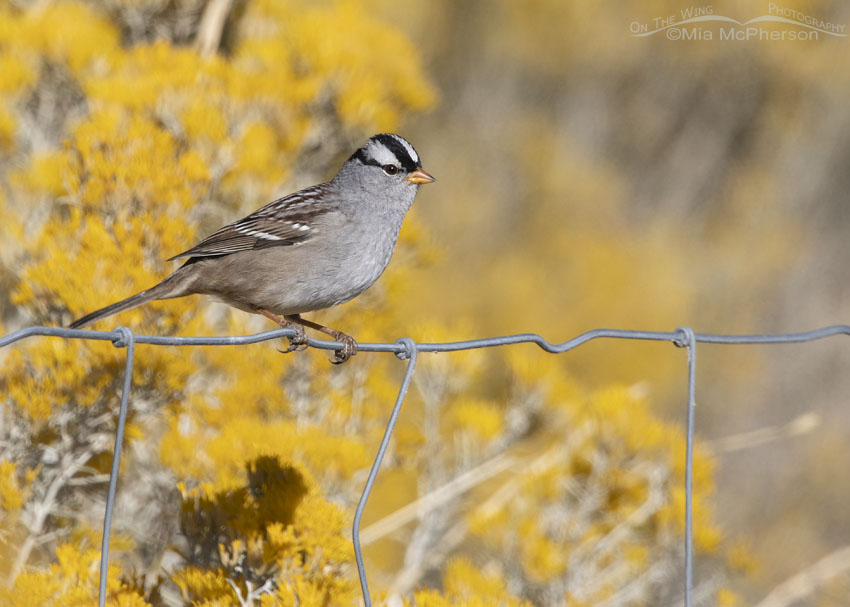 White-crowned Sparrow on a fence with blooming Rabbitbrush in the background – Nikon D500, f7.1, 1/2500, ISO 500, Nikkor 500mm VR with 1.4x TC, natural light
White-crowned Sparrow on a fence with blooming Rabbitbrush in the background – Nikon D500, f7.1, 1/2500, ISO 500, Nikkor 500mm VR with 1.4x TC, natural light
The weather has been kind of dreary the past few days and that has kept me out of the field and away from finding and photographing birds, those weather conditions will continue until later this evening when the clouds are supposed to clear. As I write this I can see the first dusting of snow of the year on the ground where I live in northern Utah, the snow won’t stick because the ground is still warm from recent warm days and the temp is sitting at 37°F but it is nice to see the snow in the valley. Finally.
I was thinking back on brighter days this morning and decided to share this photo of an adult White-crowned Sparrow perched on a fence with the bright yellow blooms of rabbitbrush in the background. What could be sunnier than those bright yellow blooms?
Winter is knocking at the door, I’m ready for it and the birds this kind of weather brings.
Life is good.
Mia
White-crowned Sparrow facts and information:
Zonotrichia leucophrys
- White-crowned Sparrows are one of the easier sparrow species to identify as adults because of the bold white and black stripes on their heads.
- During the winter White-crowned Sparrows appear over much of North America.
- Male White-crowned Sparrows do most of the singing, but sometimes females also sing.
- White-crowned Sparrows will come to bird feeders. They mainly eat seeds but during the summer they will eat caterpillars, wasps, beetles, and other insects.
- Female White-crowned Sparrows build their nests on or near the ground and will lay 4 to 6 eggs which take 11 to 14 days to hatch with the female doing the incubating. They can have between 1 to 3 broods a season.
- White-crowned Sparrows can live up to 13 years.


This is a truly beautiful image. Sunshine epitomised.
Lovely colors. I still have one lone white crowned sparrow in my yard this winter.
sorry for the repeats…nothing showed up the first two times, so kept replying…this evil iPad REALLY, REALLY HATES ME!!!
I love these birds and love this image!!! Because their nests are so close to the ground, dogs and cats running loose often destroy them…
Love these birds, love this image…because they tend to nest soclose to the ground, their nests are easily destroyed dogs running loose..and cats…
Love these birds, love this image…because they tend to nest soclose to the ground, their nests are easily destroyed dogs running loose..
Always nice to see the little birds out and about during the cold winter days.